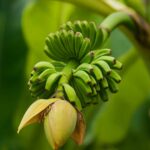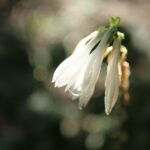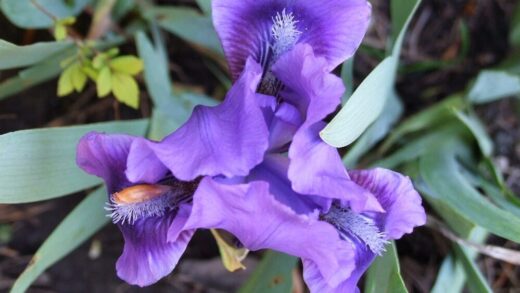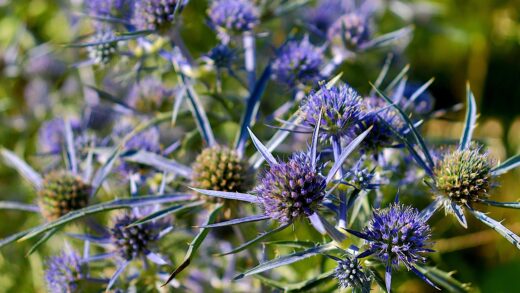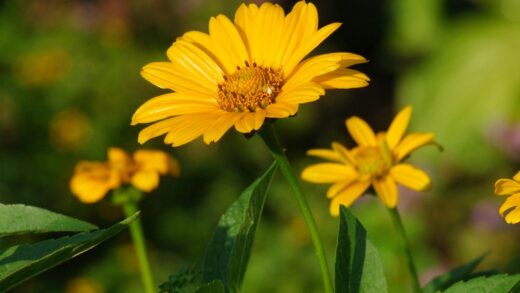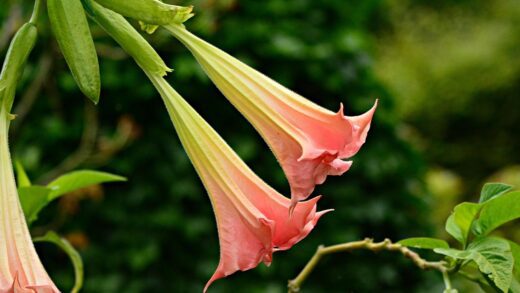The common blue violet, otherwise known as Viola sororia, is an exceptionally popular and rewarding perennial plant native to eastern and central North America. With its characteristic heart-shaped leaves and vibrant purple, white, or variegated flowers, it brings a fresh splash of color to gardens in the spring. However, for this plant to flourish in its most beautiful form, a thorough understanding of its water needs and the establishment of correct irrigation practices are essential. Proper hydration not only influences growth and flowering but also determines the plant’s overall health and resistance to diseases. The purpose of this article is to provide detailed guidance on the professional knowledge related to watering the common blue violet, helping gardeners keep their plants healthy and vigorous.
In its natural habitat, the undergrowth of deciduous forests, along stream banks, and in moist meadows, the common blue violet typically thrives in soil that is consistently damp but well-drained. This environment defines its fundamental water requirement: the plant prefers a consistently moist medium where its roots have continuous access to the necessary amount of water without being in standing water. When planting in a garden, this ideal condition should be aimed for through proper soil preparation and regular watering. It is important to understand that although the plant tolerates short dry periods, prolonged drought can significantly set back its development and reduce its tendency to flower. Optimal water supply is crucial for achieving lush foliage and abundant blooms.
Numerous factors influence the plant’s water needs, including soil type, temperature, humidity, and the plant’s location in the garden. A sandy, loose-structured soil loses moisture much more quickly than a clay, more compact medium, so the former requires more frequent watering. Violets grown in sunnier, windier locations also transpire more water and thus require more frequent irrigation than those in shady, protected spots. During the active growth and flowering period in spring and early summer, the water demand is at its highest, while it moderates during the warmer but dormant period of summer and in autumn. To develop the right irrigation strategy, it is essential to consider all these factors together.
The golden rule for watering Viola sororia is deep but infrequent watering, as opposed to frequent, shallow sprinkling. Deep watering encourages the roots to penetrate deeper into the soil, making the plant more stable and drought-tolerant. Ideally, the irrigation water should moisten the soil to a depth of at least 15-20 centimeters around the plant. The frequency of watering can be most accurately determined by checking the soil moisture content; insert your finger a few centimeters deep into the soil, and if it feels dry, it is time to water. Overwatering is at least as harmful as a lack of water, as it can lead to root rot and other fungal diseases, so standing water should be avoided at all costs.
The role of soil in water management
The quality and structure of the soil fundamentally determine the water supply for the common blue violet and the efficiency of irrigation. The ideal soil achieves a balance between good water retention and adequate drainage. Clay soils hold water well but are prone to excessive compaction, which can lead to a lack of air and standing water, damaging the roots. In contrast, sandy soils provide excellent drainage but cannot effectively retain water and nutrients, so the plant can dry out quickly. The goal is to create a loamy, humus-rich soil with a crumbly structure that can absorb and store moisture like a sponge while allowing excess water to drain away.
More articles on this topic
To improve soil structure, it is advisable to incorporate organic materials such as mature compost, mushroom manure, or peat moss into the soil before planting. These materials not only enrich the soil with nutrients but also improve its water-holding capacity in sandy soils and loosen the structure of heavy clay soils, promoting better air and water management. Organic materials also act as a buffer, helping to stabilize soil moisture content between drier and wetter periods. Proper soil preparation pays off in the long run, as it creates the foundation for a healthier root system and a more resilient plant population.
The application of soil cover, or mulching, is another key technique for optimizing the water management of the common blue violet. A 5-7 centimeter thick layer of organic mulch, such as pine bark, wood chips, or straw, spread around the base of the plant offers numerous benefits. Mulch helps to conserve soil moisture by reducing evaporation from the soil surface, thus requiring less frequent watering. It also prevents the growth of weeds, which would compete with the violet for water and nutrients, and helps to moderate soil temperature fluctuations, keeping the root zone cool during the summer heat.
Ensuring proper drainage is essential to prevent root rot, one of the most common consequences of overwatering. If the garden soil is naturally clayey and poorly drained, it is worth considering raising the bed, i.e., creating a raised bed. This allows excess water to drain away from the root zone more quickly. For violets grown in containers or pots, it is crucial that the container has drainage holes at the bottom. A layer of gravel or clay granules placed at the bottom of the pot can further improve drainage, ensuring that the roots never sit in standing water.
Timing and techniques of irrigation
Proper timing of irrigation can significantly increase the efficiency of the water used and reduce the risk of plant diseases. The most ideal time to water is in the early morning hours. At this time, the temperature is still lower, and the wind is weaker, minimizing evaporation loss and giving the water enough time to seep deep into the soil before the sun’s heat warms the soil surface. Morning watering also ensures that the plant’s foliage dries quickly during the day, which reduces the chance of fungal infections such as powdery mildew developing. Watering in the evening is not recommended because the leaves can remain wet overnight, which encourages the proliferation of pathogens.
More articles on this topic
The irrigation technique is also crucial. Unnecessary wetting of the foliage should be avoided, and the water should be delivered directly to the base of the plant, onto the soil. A drip irrigation system or a low-pressure soaker hose is excellent for this purpose. These methods deliver water slowly and evenly to the root zone, minimizing evaporation and runoff while keeping the leaves dry. If using a watering can for manual watering, it should also be directed at the soil surface, without the sprinkler rose, so that the water goes directly to the roots. Overhead watering with a sprinkler is the least efficient and riskiest method in terms of fungal diseases.
Newly planted common violets require special attention when it comes to irrigation. For the first few weeks after planting, the soil should be kept consistently slightly moist to help the root system establish and adapt to its new environment. During this initial, critical period, more frequent but smaller amounts of water may be needed to prevent the shallow roots from drying out. Once the plant has established itself and is producing new shoots, a gradual transition can be made to the deeper, less frequent watering schedule that is ideal for the established plant population. Careful initial watering lays the foundation for the plant’s long-term success.
Different seasons require different irrigation strategies. In the spring, during the period of active growth and flowering, the common blue violet requires the most water, so the soil should be kept consistently moist. In the summer, especially during hot and dry periods, regular watering is also necessary, although the plant’s growth may slow down. In the autumn, as temperatures drop and precipitation increases, the frequency of watering should be reduced. In preparation for winter, it is advisable to give a thorough, deep watering before the first frosts so that the plant has an adequate water reserve for the cold months, but artificial supplementation is generally not needed during the winter period, except in extremely dry and mild winters.
Signs and consequences of improper watering
Plants communicate with us, and the common blue violet also gives clear signs when its water supply is not optimal. The most obvious sign of water deficiency is wilting and drooping of the leaves. The plant tries to reduce its evaporation surface area this way and conserve its remaining moisture. If the drought is prolonged, the edges of the leaves may turn brown and dry out, and the plant’s growth will stop. Flowering may also fail to occur, or the flowers will be small and insignificant. It is important to react immediately to the first signs of wilting with a thorough, deep watering so that the plant can regenerate before suffering permanent damage.
Overwatering, although less conspicuous initially, is at least as dangerous, if not more so, than a lack of water. Roots standing in constantly stagnant water do not get enough oxygen, which leads to the death of root cells, i.e., root rot. The external signs of this can be deceptive, as the plant may wilt in the same way as with water deficiency, since the rotting roots are no longer able to absorb water. Other signs of overwatering can be yellowing of the leaves (especially the lower ones), slow, weak growth, and the appearance of moss or algae on the soil surface. Root rot is a serious condition from which it is difficult for the plant to recover.
Improper watering practices not only weaken the plant’s physical condition but also make it more susceptible to various diseases and pests. Weakened, stressed plants are less resistant to fungal infections such as powdery mildew, downy mildew, or gray mold. The moist environment created by overwatering is particularly favorable for these pathogens. Similarly, pests such as snails and slugs are particularly attracted to plants in a damp, humid environment. Maintaining a healthy, properly irrigated plant population is therefore a fundamental pillar of plant protection.
To prevent problems, regular observation and proactive care are essential. Instead of following a strict watering schedule, pay attention to the condition of the plant and the soil. Regularly check the soil moisture content, observe the color and posture of the leaves, and adjust watering to the current weather conditions. If you notice signs of overwatering, allow the soil to dry out thoroughly before the next watering and improve the drainage. In case of water deficiency, do not delay in replenishing it. Careful observation and quick intervention are the key to keeping the common blue violet a healthy and flowering ornament in our garden.




